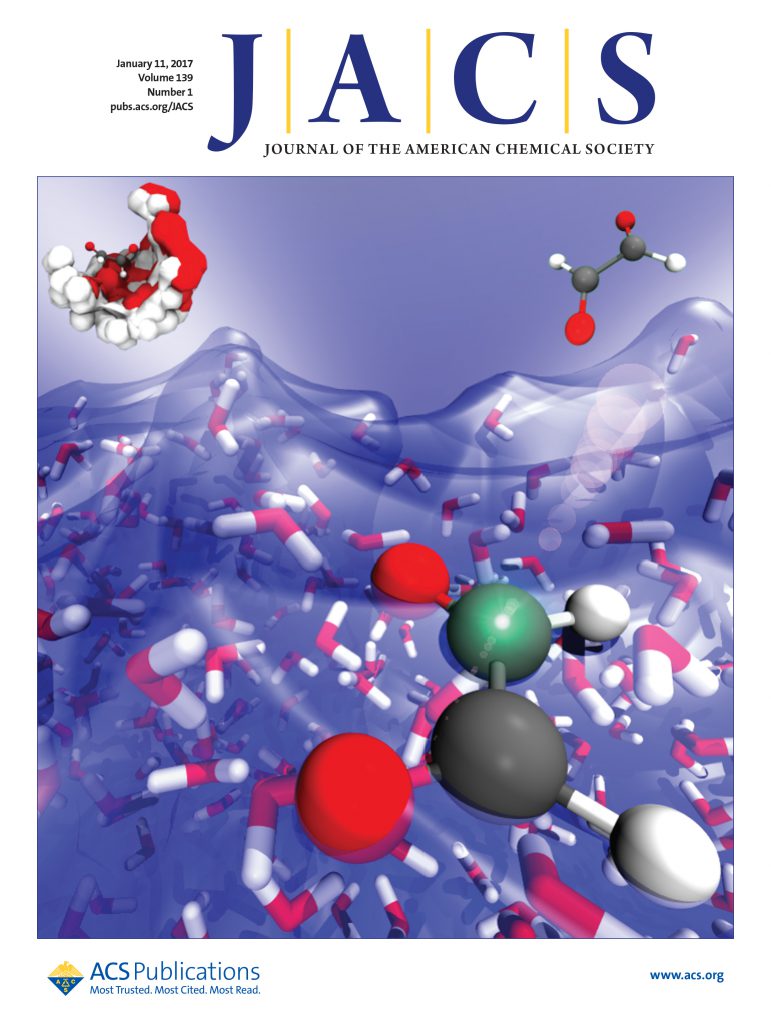Biomimetic Parallel Vein-like Two-Dimensional Supramolecular Layers Containing Embedded One-Dimensional Conduits Driven by Cation−π Interaction and Hydrogen Bonding to Promote Photocatalytic Hydrogen Evolution
IF 15.6
1区 化学
Q1 CHEMISTRY, MULTIDISCIPLINARY
引用次数: 0
Abstract
Two-dimensional supramolecular assemblies (2DSAs) with well-defined nanostructures have emerged as promising candidates for diverse applications, particularly in photocatalysis. However, it still remains a significant challenge to simultaneously achieve effective electron transport and multiple active sites in 2DSA, even though this is crucial for enhancing photocatalytic performance. This reason can be attributed to the lack of a suitable structural paradigm that enables both effective intermolecular orbital overlap and increased substrate contact. Inspired by the parallel venation of monocotyledons that can facilitate substrate transfer, we overcome the limitation, in this study, by integrating parallel-arranged one-dimensional (1D) conduits with edge-on packing motifs to construct biomimetic, parallel vein-like two-dimensional supramolecular layers (PV-2DSLs) through the hierarchical self-assembly of cationically modified, rigid multiarmed monomers. The resulting PV-2DSLs exhibit a long-range aromatic cation−π stacking that can facilitate electron transport. Importantly, the unique structural feature of these PV-2DSLs is the orderly and parallel embedding of 1D conduits within the 2D plane, which is significantly different from the conventional channels formed by the vertical stacking of 2D porous materials. These conduits promote multielectron transfer pathways, leading to enhanced charge separation and carrier transport when coupled with long-range aromatic cation−π stacking. As a consequence, these PV-2DSLs exhibit long excited state lifetime, leading to significantly improved hydrogen production rates up to 3.5 mmol g–1 h–1, which is approximately 17.5 times higher than that of the counterpart without 1D conduits (0.2 mmol g–1 h–1).

由阳离子- π相互作用和氢键驱动的含嵌入一维导管的仿生平行静脉状二维超分子层促进光催化析氢
具有良好定义的纳米结构的二维超分子组件(2dsa)已经成为各种应用的有希望的候选者,特别是在光催化方面。然而,在2DSA中同时实现有效的电子传递和多个活性位点仍然是一个重大挑战,尽管这对提高光催化性能至关重要。这一原因可归因于缺乏一种合适的结构模式,既能有效地实现分子间轨道重叠,又能增加底物接触。受单叶植物的平行脉状结构可以促进底物转移的启发,我们克服了这一限制,在本研究中,通过将平行排列的一维(1D)管道与边缘上的填充基元结合起来,通过阳离子修饰的刚性多臂单体的分层自组装来构建仿生的平行脉状二维超分子层(PV-2DSLs)。所得PV-2DSLs表现出有利于电子传递的远程芳族阳离子- π堆叠。重要的是,这些PV-2DSLs的独特结构特征是在二维平面内有序平行地嵌入一维管道,这与传统的二维多孔材料垂直堆叠形成的通道有明显不同。这些管道促进了多电子转移途径,当与远程芳香阳离子- π叠加时,导致电荷分离和载流子传输增强。因此,这些PV-2DSLs表现出较长的激发态寿命,从而显著提高了产氢率,最高可达3.5 mmol g-1 h-1,比没有1D导管的对应物(0.2 mmol g-1 h-1)高出约17.5倍。
本文章由计算机程序翻译,如有差异,请以英文原文为准。
求助全文
约1分钟内获得全文
求助全文
来源期刊
CiteScore
24.40
自引率
6.00%
发文量
2398
审稿时长
1.6 months
期刊介绍:
The flagship journal of the American Chemical Society, known as the Journal of the American Chemical Society (JACS), has been a prestigious publication since its establishment in 1879. It holds a preeminent position in the field of chemistry and related interdisciplinary sciences. JACS is committed to disseminating cutting-edge research papers, covering a wide range of topics, and encompasses approximately 19,000 pages of Articles, Communications, and Perspectives annually. With a weekly publication frequency, JACS plays a vital role in advancing the field of chemistry by providing essential research.

 求助内容:
求助内容: 应助结果提醒方式:
应助结果提醒方式:


